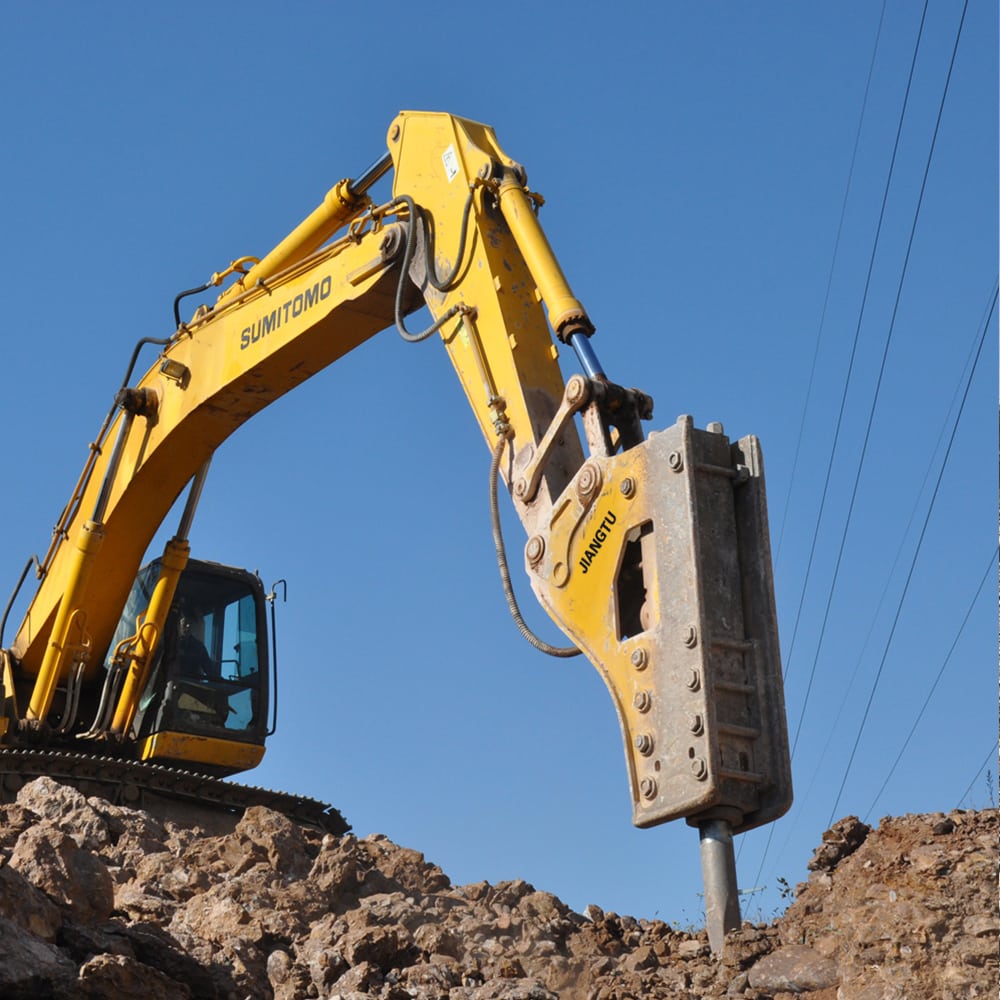Imagine vast construction sites, bustling quarries, and rugged mining operations. At the heart of these endeavors lies a powerful machine – the rockbreaker. The Rockbreaker Market fuels progress by developing and supplying these essential tools, designed to pulverize rock formations into manageable pieces. From road construction to demolition projects, rockbreakers are the muscle behind infrastructure development and resource extraction. Driven by rising urbanization, increasing demand for minerals and aggregates, and growing investments in infrastructure projects, the Rockbreaker Market is experiencing significant growth. Let’s delve into the diverse applications of rockbreakers and explore the exciting trends shaping this dynamic market.
Breaking New Ground: Applications of Rockbreakers
Rockbreakers play a vital role in various stages of construction, mining, and demolition projects:
- Trenching and Excavation: Rockbreakers attached to hydraulic excavators break up tough rock formations to create trenches for pipelines, foundations, and utility lines.
- Demolition and Recycling: These powerful tools are used to demolish concrete structures, break apart old buildings, and prepare construction debris for recycling.
- Quarrying and Mining: Rockbreakers are essential for extracting valuable minerals and aggregates from quarries and mines, breaking down large rocks into manageable sizes for processing.
- Road Construction and Maintenance: Rockbreakers are used to prepare roadbeds by breaking up rock formations, enabling the construction of new roads or the maintenance of existing ones.
- Landscaping and Site Preparation: Rockbreakers can be instrumental in landscaping projects, fragmenting rocks for landscaping features, or preparing uneven terrain for construction.
- Subsea Applications: Specialized underwater rockbreakers are used in offshore construction projects and maritime operations to break up rock formations on the seabed.
Get Exclusive Sample Copy of the Report: https://www.futuremarketinsights.com/reports/sample/rep-gb-7647
A Force to Be Reckoned With: Growth Drivers in the Rockbreaker Market
The Rockbreaker Market is experiencing a surge in popularity driven by several key factors:
- Rising Urbanization: The rapid growth of cities necessitates extensive infrastructure development projects, including road construction, tunneling, and building foundations. Rockbreakers play a crucial role in these endeavors.
- Increasing Demand for Minerals and Aggregates: The construction industry relies heavily on crushed rock for various applications. Rockbreakers are essential for extracting and processing these materials.
- Focus on Efficiency and Productivity: Construction companies are constantly seeking ways to improve efficiency and complete projects faster. Powerful and reliable rockbreakers help achieve these goals.
- Advancements in Rockbreaker Technology: Continuous advancements in hydraulics, material science, and dust suppression technologies are leading to more powerful, efficient, and environmentally friendly rockbreakers.
- Development of Carrier Compatibility: Modern rockbreakers are designed to be compatible with a wide range of hydraulic excavators and other carriers, offering greater versatility and application flexibility.
The global rockbreakers market reached a substantial valuation of USD 28,118.8 million in 2023 and is poised to witness remarkable growth, with a projected Compound Annual Growth Rate (CAGR) of 6.1%, aiming to achieve a market worth of USD 50,833.6 million by 2033.

While the Rockbreaker Market presents promising prospects, there are challenges to overcome:
- High Initial Investment: The upfront cost of acquiring a high-performance rockbreaker can be significant, especially for smaller companies. Rental options and financing solutions can help address this barrier.
- Operating and Maintenance Costs: Rockbreakers require regular maintenance to ensure optimal performance and lifespan. The ongoing costs of spare parts and skilled labor need to be considered.
- Environmental Concerns: Rockbreaking activities can generate dust and noise pollution. Manufacturers are developing dust suppression systems and quieter operation technologies to minimize environmental impact.
- Safety Considerations: Rockbreaking operations can be hazardous. Proper training for operators and adherence to safety regulations are paramount.
Get Report Now: https://www.futuremarketinsights.com/checkout/7647
